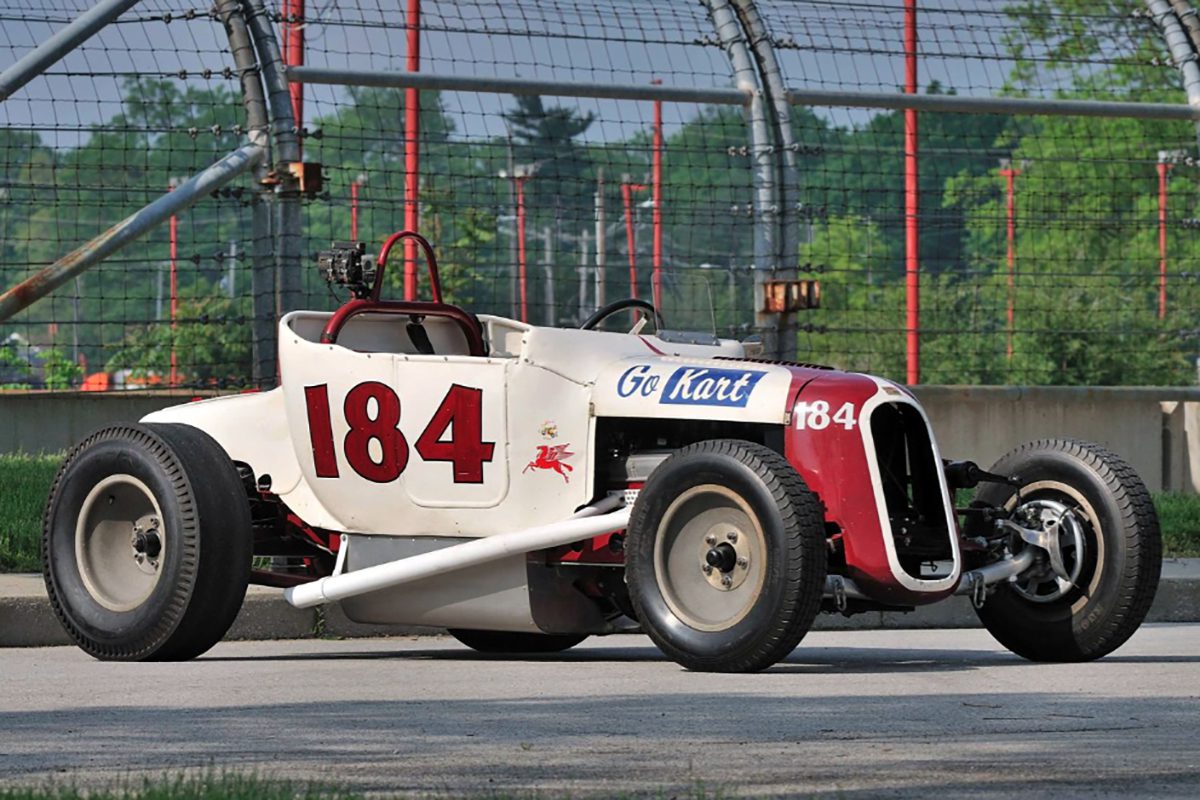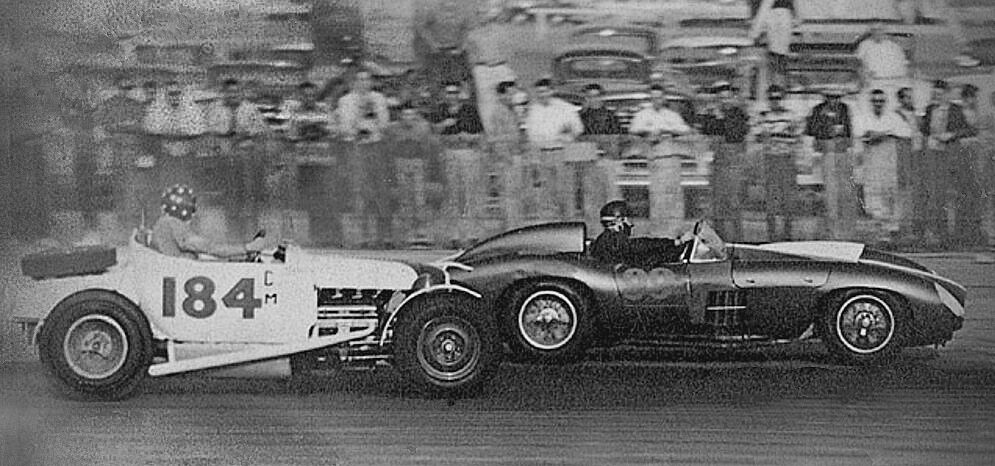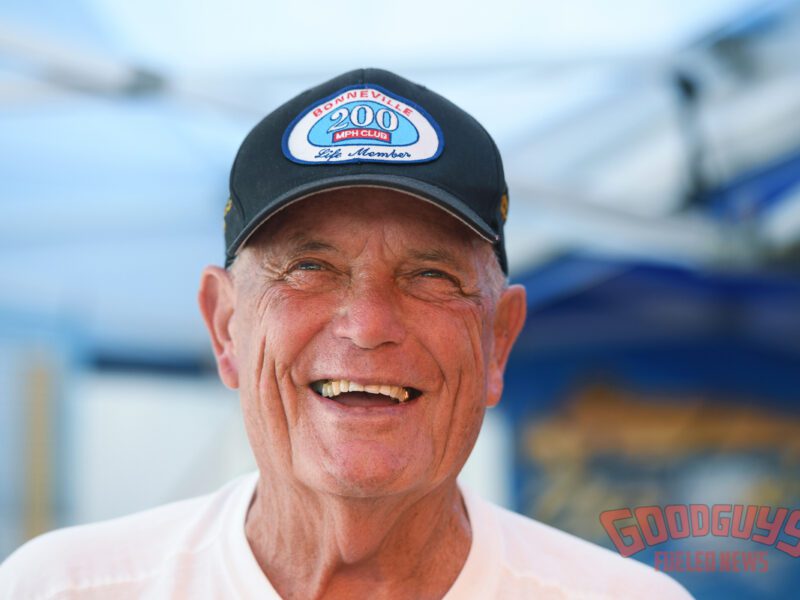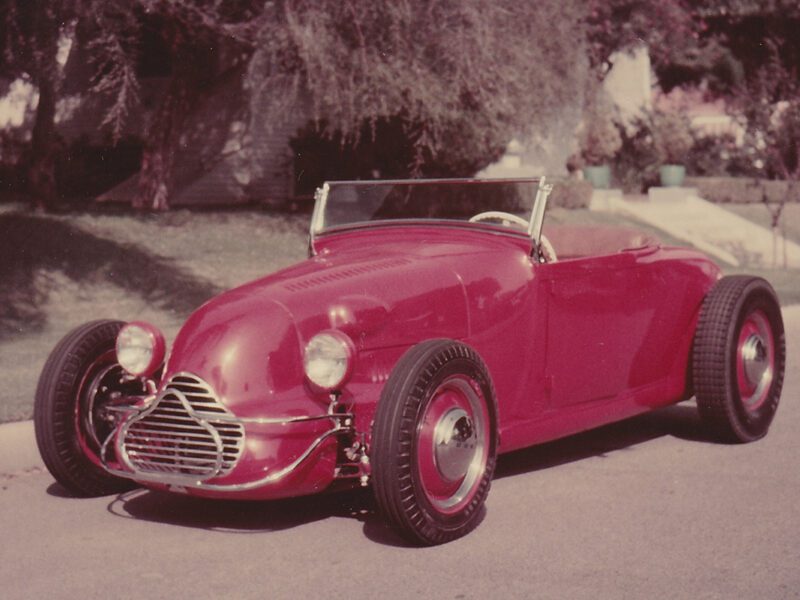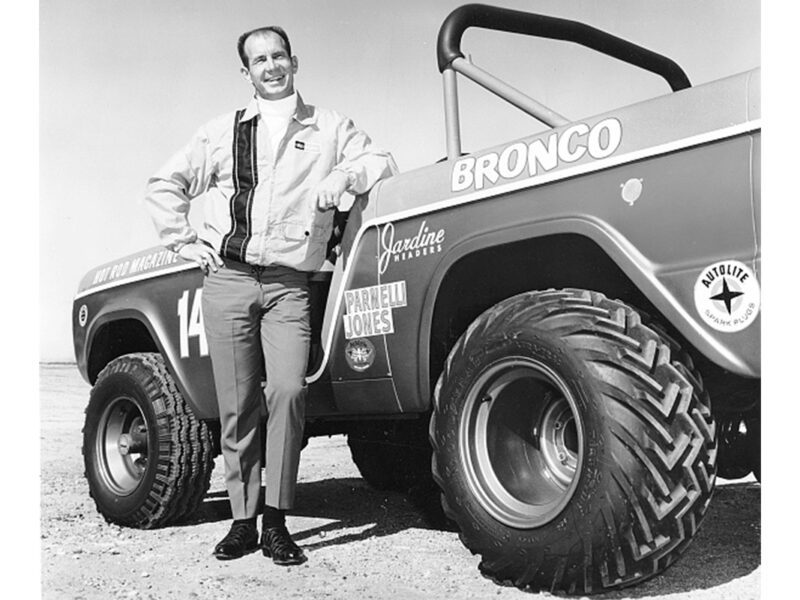Duffy’s Eliminator – Model T Road Race Giant Killer
Duffy Livingstone was one of America’s – and the world’s – unsung motorsports innovators. In 1958 Duffy, a resident of Pasadena, California, created the original Go-Kart brand, the first commercially available racing kart. At the time competitive karting didn’t exist. Go-Kart’s popularity set in motion a global interest in karting that led to its current status as the preferred entry point for racers worldwide.
But before Duffy Livingstone became a karting trailblazer, he was your typical post-WWII California hot rodder, who upon returning from the Pacific Theater opened a muffler shop where he helped popularize “glasspack” mufflers for the burgeoning hot rod crowd. Those days, being a hot rodder in SoCal meant you spent your weekends at the drags, the lakes, or Bonneville. However, none of those disciplines interested Duffy. They scared him, he said. It was sports cars that captivated him.
Our story begins in 1950 in nearby Sherman Oaks. A rodder named Jay Chamberlain was putting together a 1924 Ford T-bucket racer with an early-’20s chassis and running gear that he planned to compete in the California Roadster Association (CRA) short track series. When CRA redid their rulebook, it suddenly became obsolete. So, Chamberlain sold the rolling chassis to his friend Duffy.
Duffy dropped in a Merc flathead V8, Cadillac three-speed, and Bendix-style front brakes. The flathead had already been breathed on – bored-and-stroked with a Potvin Eliminator cam. The car’s aesthetics, though, left much to be desired –in part because Duffy painted it himself mixing red and gray primers. The blend hatched a hideous pink. Appearances aside, Duffy was ready to hit the track.
In the early-’50s, road courses were rudimentary at best. The California Sports Car Club would hold events on airports or any expanse of concrete they could find. Palm Springs and Santa Barbara were early sites, with the tracks laid out with hay bales. Spectators viewed at their peril.
Duffy debuted the Eliminator (named after that Potvin camshaft) at the Palm Springs airport course; he borrowed Don Blair’s trailer to get it there. “I was lucky the damn thing even started,” he told MotorTrend. Once it did start, it didn’t go well. “I entered a bunch of races before I got the T to handle.”
Undeterred, Duffy swapped out the flathead for a ’55 Chevy V8, a broken dealer warranty model. It cost a mere $25. Repairs were required: new pistons, crankshaft repair, and plugging a hole in the block (all injuries inflicted by the dealer to render the warranty engine unusable). A set of Chevy truck cylinder heads with bigger valves topped the V8, which had been bored out from 265c.i. to 283c.i. The setup also featured a Schiefer flywheel and a trio of Stromberg 97 carbs.
Duffy paid particular attention to the suspension. He adapted torsion bars to the rear suspension, and while this helped, it didn’t help enough. Something was askew. A post-race inspection revealed an imbalance in weight transfer. He changed out the torsion bars for a ’40 Ford rear spring and added Houdaille shocks at all four corners. Voilà!
Unbeknown to modern drag racers, the Pomona Fairgrounds track – home to the NHRA Winternationals – also did double duty as a road course. In 1959, the Los Angeles Herald Examiner hosted a USAC Road Racing Championship event at Pomona. It drew a star-studded field of drivers and cars: Dan Gurney, Ken Miles, Bob Bondurant, Jim Hall, Carrol Shelby…and Frank Livingstone, aka, Duffy. The 150-mile race drew 40,000 spectators.
Duffy figured he’d never run fast enough to even make the field, but surprisingly he qualified 19th – out-qualifying Hall, Formula One star Wolfgang Von Tripps, and Le Mans winner Maurice Trintignant of France.
Pitted against this field of road race aces and exotic furrin’ machinery, Duffy dazzled. He ran as high as eighth before overheating forced a pit stop. A splash of water and back to track he went. He finished a head-slapping 11th out of 37 starters. He bested a Ferrari 500, a Lotus Seven, and a Cooper Climax sports car. All in a hot rod Model T.
Duffy campaigned the Eliminator for several more years, terrorizing all manner of high-dollar sports cars. While he did dial in the Eliminator’s handling, much of the car’s success was due to Duffy’s talent behind the wheel. He was an outstanding driving talent. In later years, Duffy won multiple national karting championships.
After bouncing from a handful of owners, the Eliminator was purchased in 1996 by automotive writer Brock Yates (of Cannonball fame). It was minimally restored by Tom Murphy and Pete Chapouris in time to compete in the 1997 Monterey Historics, where it again tormented those overseas interlopers, earning Chopard Award for Best Performance. Later Chapouris completed a full restoration for the 2003 Pebble Beach Concours d’Elegance, where it won the Road Racing Hot Rod Class trophy.
I had the privilege of knowing Duffy very well from my kart racing days. He had a devilish sense of humor, often self-deprecating. He was a karting icon and everyone in the paddock knew it. Duffy passed away in 2020 at age 92.
While Duffy may be best known for his contribution to karting, he proved that hot rods could do more than go fast in a straight line.

